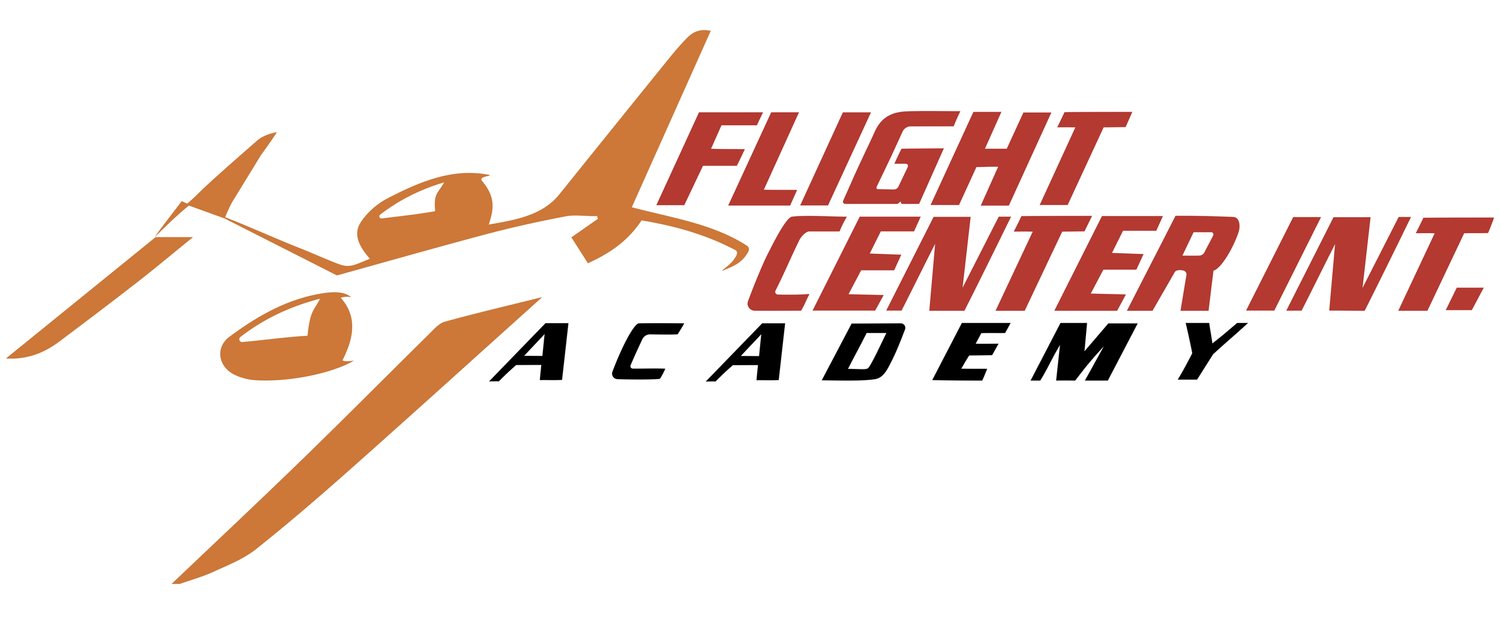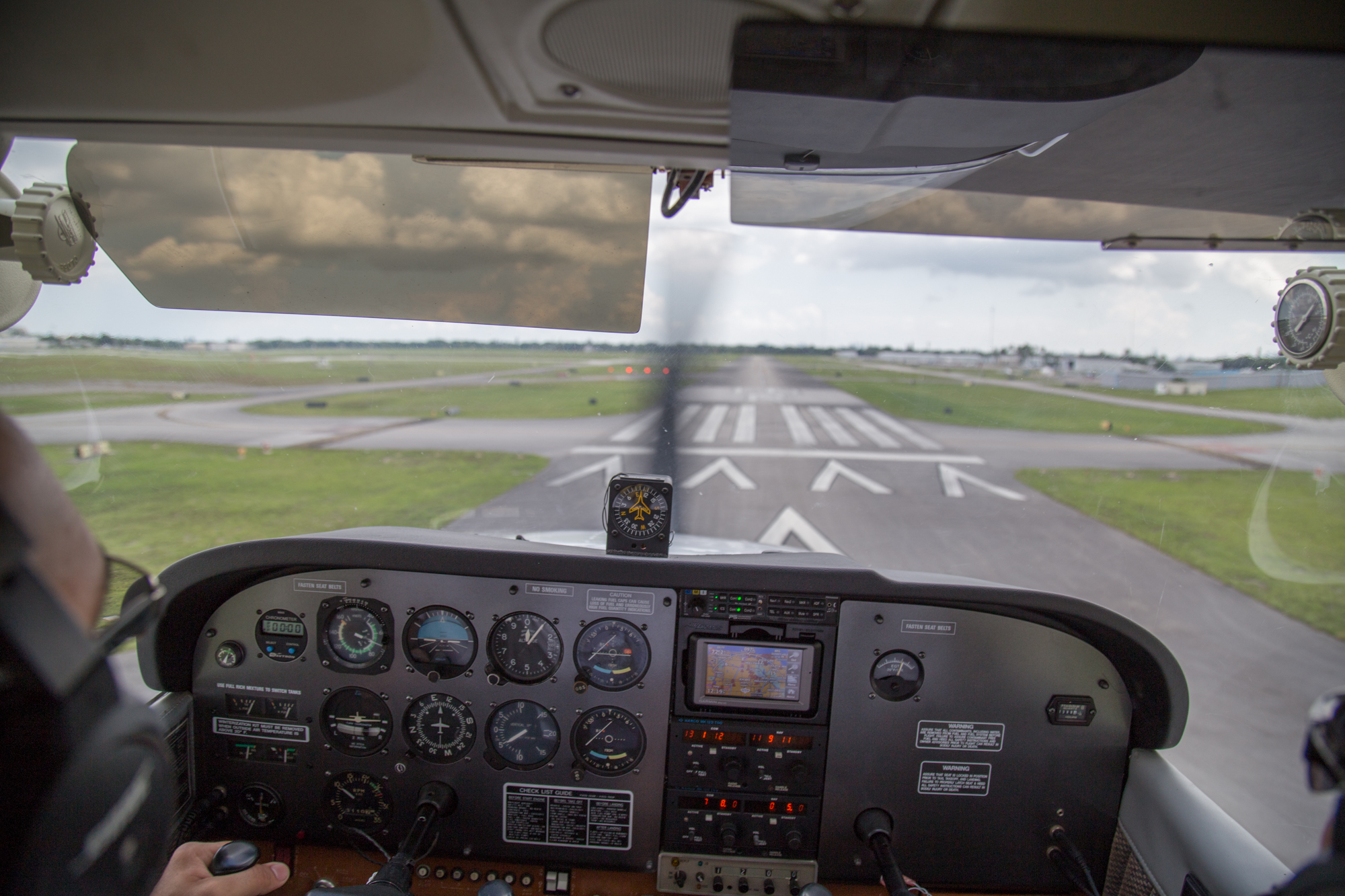We've seen many eager students enter our academy with many different expectations of their training. There are many people who want to learn how to fly an airplane and all of them learn in different way at different paces. We understand that If you're going to fly, you're going to make mistakes. It's inevitable. However, nothing concerns a flight instructor more than a student who doesn't learn from them, because he knows that's exactly the kind of pilot his student will become. Your ability to see a mistake and correct it is what actually defines you as a pilot.Some find the experience easy and quickly master the necessary skills. Some find it difficult but most are willing to try and overcome their struggles.Each student has a different aptitude when it comes to learning how to fly an airplane.
Holding The Controls
When a student begins flight training, they often struggle to emotionally and physically relax. Some common student pilot errors include holding the controls too firmly. Too tight of a grip on the controls prevents the pilot from feeling the airplane, shifting winds and the necessary control inputs required to obtain a certain attitude. Prior to landing, it is helpful for the student to consciously relax their grip. A tight grip on the controls may lead to over controlling the airplane. Airplanes are inherently stable and a lot of the “turbulence” is caused by the student pilot’s tendency to over control for small deviations in pitch and bank. It's important for them to relax so they can easily make the necessary delicate adjustments, wait to see the results of the small adjustments and readjust if necessary.
Landing
One of the goals for every student pilot is to make every approach the same. Every good landing begins with a stabilized approach. It is almost impossible to have a good landing every time if your approach changes from one to the other. For this reason, students are taught to perform specific steps to configure the airplane for landing in a specific leg of a traffic pattern; For example: 10 degrees of flaps abeam the number on downwind, 20 degrees on base and 30 degrees on final.
Another difficulty student pilots have when learning to land is judging the flare. Some students attempt to transition from a nose-low descent attitude directly to a nose-high flare attitude. This results in ballooning if the airplane carries too much airspeed. Often, the student pilot will try to compensate by abruptly pushing the controls forward resulting in porpoising. This is dangerous because the nose gear could strike the ground and the student pilot could lose control of the airplane. If a flare is started too early with low airspeed, it causes a high rate of descent and hard landing. Between the descent and flare, there is a phase called the level-off. In this phase the airplane is transitioned from a nose-low attitude to a nose-level attitude. This attitude allows the airplane to diminish the extra airspeed, transition to a nose-high attitude, and smoothly touch down on the runway with a low rate of descent.
Mental Block
This is something that is common with student pilots. It's essential in flight training to help students overcome the experience of a mental block. It doesn't matter if a student pilot has an easy time mastering other skills. At some time during their flight training, they will have a mental block. They will know the information but not be able to retrieve it. Some student pilots will struggle to do simple math and figure out their next heading.
Students sometimes dwell on small mistakes, causing their attention to shift away from the cockpit leading to other mistakes. This can cause frustration to the students and incapacitate them from focusing on the task at hand. When frustration reaches this point, it is best to end the flight and debrief the flight on the ground. It is hard to learn in the airplane when the student is in that state of mind. The best way to combat mental block is to thoroughly prepare for each flight. In time, the mental blocks go away.
Situational Awareness
When student pilots are flying their aircraft, it is moving, and things are moving around them. It's important they learn to focus on the things that have to happen in a specific order and at a specified time. Some student pilots struggle to manage everything that is happening. This is not a hands-on skill but more of a thinking skill that needs to be developed. Student pilots need to be able to prioritize what they are doing. This can be a struggle. It's not enough to be able to fly an aircraft from one place to another. They need to be constantly aware of where they are as well as how high the aircraft is, fuel status, weather patterns, traffic and more.
Viewing Instrument Panel
New student pilots will often spend more time looking at an aircraft's instrument panel than looking outside. It is important that they learn to control an aircraft by visual reference using the horizon. Pilots are responsible for traffic avoidance when in visual meteorological conditions; therefore, it is of outmost importance that students are looking outside most of the time. Cross-checking instruments should take no more than 5 seconds for every 15 seconds spent looking outside.
Radio
There are some student pilots who struggle to learn the proper use of the radio. Most know the phraseology but struggle to communicate while also performing flight tasks in the airplane. The best way to learn is to practice! Listen to communications from a handheld radio and practice answering as you would in a flight. You should know exactly what you want to say before you key the mic to minimize the time you take up the frequency. Remember: WHO are you talking to, WHO you are, WHERE you are and WHAT you want.
Rudder
Students struggle to compensate for drift by the use of rudders. Often you see a student pilot on final rocking the airplanes wings trying to maintain centerline. Usually the student pilot overcorrects and fights the airplane all the way to touchdown. Instead, the pilot should make drift corrections by small rudder inputs while keeping the wings level until the wing low transition is necessary for touch down. The student pilot shall align the aircrafts nose with the runway center line by using the rudder and simultaneously banking into the wind to compensate for drift. This will result in zero drift and zero side load on the landing gear.





